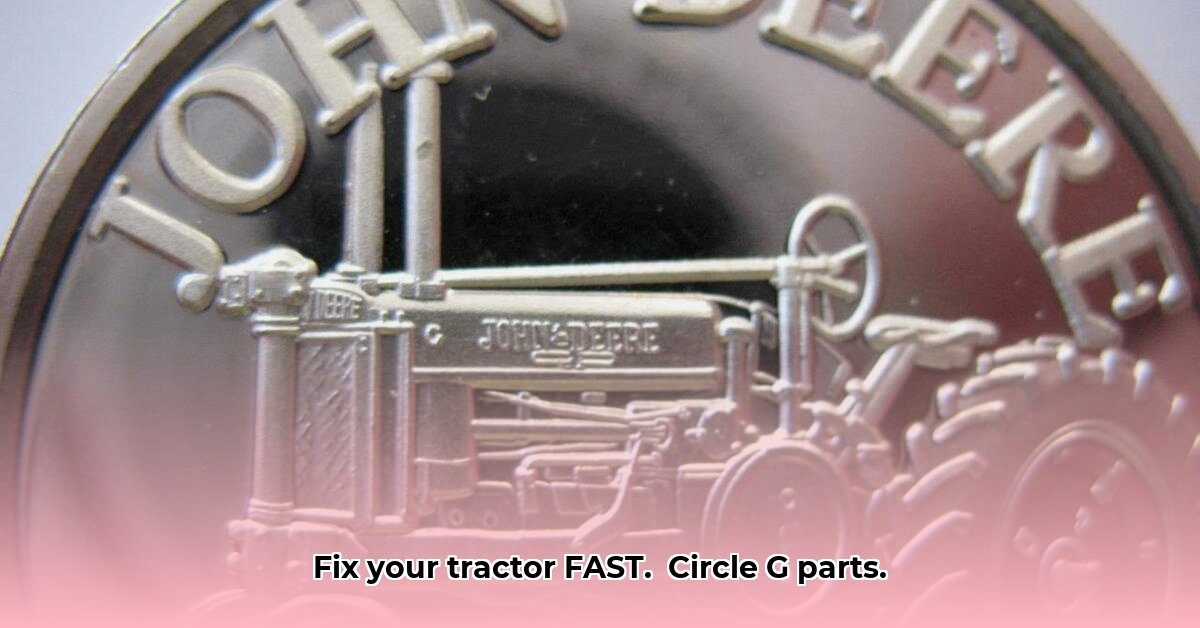
Finding the right parts and keeping your Chinese-made tractor (Jinma, Farmpro, etc.) running smoothly can be challenging. This guide simplifies the process, focusing on Circle G Tractor Parts as a reliable source and offering actionable strategies for maintenance and repair. For more starting tips, see this helpful guide on how to start a tractor.
Unlocking the Circle G Tractor Parts Catalog
Navigating Circle G's online catalog is key to finding the parts you need efficiently. Here's a step-by-step guide:
Identify Your Tractor: Locate your tractor's model and serial number (usually found on a sticker). This information is critical for accurate part identification.
Access the Circle G Catalog: Visit Circle G's website (https://www.circlegtractorparts.com/) and use the model and serial number to locate your tractor's specific parts section.
Utilize Part Numbers: If you know the part number, use it for a direct search. This is the most efficient way to find the correct component.
Leverage Diagrams: If the part number is unknown, use the detailed diagrams provided by Circle G. These diagrams visually represent the tractor's components, aiding in part identification.
Verify Your Selection: Before ordering, double-check the part number and diagram to ensure accuracy. This step prevents costly mistakes and delays.
Spotting Counterfeit Parts: Protecting Your Investment
Counterfeit parts are a significant risk. Here's how to identify genuine Circle G parts:
Examine Markings: Authentic Circle G parts display clear markings: logos, part numbers etched or stamped onto the part, and consistent branding on packaging.
Compare to Website Images: Cross-reference the received part with images on the Circle G website to verify authenticity. Discrepancies raise red flags.
Contact Circle G Directly: If you have doubts about a part's authenticity, contact Circle G customer service for verification.
Troubleshooting Common Tractor Problems
Many issues are easily solvable with a systematic approach:
Problem 1: Engine Won't Start
- Possible Causes: Low fuel, clogged fuel filter, dead battery, faulty wiring, starter motor failure.
- Troubleshooting: Check fuel level, try jump-starting the battery, listen for unusual sounds.
Problem 2: Hydraulic System Malfunction
- Possible Causes: Low hydraulic fluid, leaks, faulty hydraulic pump.
- Troubleshooting: Check fluid levels, inspect for leaks, and address any visible issues before replacing components.
Preventative Maintenance: Extending Your Tractor's Lifespan
Regular maintenance significantly extends your tractor's life and prevents costly repairs. A simple schedule includes:
| Task | Frequency | Notes |
|---|---|---|
| Check oil levels | Every 50 hours | Use the correct oil type and adhere to manufacturer recommendations. |
| Change oil & filter | Every 200 hours | Use the recommended oil filter. |
| Inspect hydraulics | Every 50 hours | Look for leaks and check fluid levels. |
| Check coolant levels | Every 50 hours | Exercise caution when handling hot coolant. |
Finding a Qualified Mechanic
Locating a mechanic experienced with Chinese tractors is vital for complex repairs. Use these strategies:
Online Forums: Search online forums dedicated to farm equipment or Chinese tractors. Many farmers share their experiences and recommend local mechanics.
Word-of-Mouth: Ask fellow farmers for recommendations within your community. Local knowledge is invaluable.
Farm Equipment Dealers: Contact local farm equipment dealers and inquire about mechanics who specialize in your tractor’s make and model.
Understanding Warranty Options
Always review the warranty provided by Circle G or your supplier for purchased parts. Understanding the coverage, duration, and claim process is crucial for resolving potential issues. This information is usually available online or may be included with your purchase.
Diversifying Your Suppliers: Mitigating Risk
Relying on a single supplier is risky. Diversifying your sources by exploring other reliable suppliers helps safeguard against potential supply chain disruptions or part shortages. This is a proactive measure to ensure you have access to necessary parts when needed.
By following these steps and utilizing the resources available through Circle G, you can dramatically improve your tractor's performance, reliability, and overall lifespan. Remember, proactive maintenance and informed decisions are key to long-term success.